
Create a comprehensive data center design that supports the critical needs of the business, examining in-depth the key constraints of data center functionality to deliver a balanced, efficient and sustainable solution.
The Certified Data Center Design Professional (CDCDP®) program is proven to be an essential certification for individuals wishing to demonstrate their technical knowledge of data center architecture and component operating conditions.
This five-day program has a comprehensive agenda that explores and addresses the key elements associated with designing a data center. It teaches best practice principles for the design, construction and operation of computer rooms and data center operational support facilities. The program also addresses the importance of accurate interpretation of detailed customer requirements at the planning stage to ensure that the business needs remain focal to all decision making.
Learners will also explore the key elements of physical infrastructure, electrical distribution systems, air-conditioning, data cabling and building support systems. The program concludes with a comprehensive case study exercise that guides learners through the design steps from initiation to commission, covering the business decisions, design scope and implementation phases that need to be addressed throughout all aspects of the process.
A certified CDCDP® also considers the requirements for compliance, having a full understanding of national and international regulations, codes and standards. During the program, learners will be provided a valuable opportunity to access the latest industry standards.
The CDCDP® program is led by one of CNet's expert Instructors and is available via remote attendance or classroom-based.
Following this program, you are encouraged to continue your professional development by advancing your knowledge and skills to gain further official certifications and qualifications by progressing through The Global Digital Infrastructure Education Framework which maps education programs to career advancement throughout the network infrastructure and data center sectors.
What is a Data Center?
- The data center stack
- Types of data center
The Design Planning Process
- Main design considerations
- Developing a project plan
Scoping the Requirement
- Identifying key stakeholders
- Market and political drivers
- National and international standards
- Availability and resilience classifications
- Introduction to availability models (Uptime Tier, TIA 942-B Rating, BICSI Classes and Syska Hennessy Critical Levels)
- Recommendations for location, size, heights, floor loading, lighting and décor
Whitespace Floor
- National and international standards
- Structural and load requirements
- Recommended floor heights
- Airflow and sealing
- Ramps and access
- Seismic protection
- Slab floor construction considerations
Cabinets
- Requirements of a cabinet
- Security, safety and stabilization
- Clearance, accessibility and ventilation
- Cable management
- Seismic stability considerations
- Design specifications
Power
- Regulations and codes
- The meaning of N, N+1 2(N+1), etc
- Power delivery and distribution losses
- Uninterruptible Power Supply (UPS) options
- Generator considerations
- Power distribution units
- Power distribution to, and in, a rack
- Remote Power Panels (RPPs)
- Emergency Power Off (EPO)
- Estimating power requirements
Cooling
- National and international standards
- Basics of air conditioning principles
- CRAHs and CRACs
- ASHRAE operational parameters
- Underfloor plenum approach
- Hot aisle/cold aisle layout principle
- Hot and cold aisle containment
- Psychrometric charts
- Min and max throw distances for underfloor air
- Bypass and recirculation
- Airflow management
- Chilled water racks, CO2, free air cooling
Earthing & Bonding
- Applicable standards
- The terminology of earthing, grounding and bonding
- Equipotential bonding
- Electrostatic Discharge (ESD)
- Functional earths
- The Signal Reference Grid (SRG)
Cable Containment, Management & Protection
- Applicable standards
- Separation of power and data cables
- Administration and labelling
- Types of conduit, trunking, tray, etc. available
- Earthing and bonding
- Containment fill ratio
- Underfloor vs overhead containment
- Cable management, in and to, a rack
- Fire stopping
Delivering the IT Strategy
- Data center equipment
- Functions and protocols, current and future
- Data center connections
- Cabling requirements
- Cabling standards
- Cabling options
- The impact of 40G and 100G
- The impact of virtualization
Copper & Optical Fiber Cabling Connectivity
- Cabling standards
- Cable categories supporting 10GBASE-T, CAT6A & Cat 7A & Cat 8
- Screened vs unscreened cables
- High density patching
- Alien crosstalk
- Copper test requirements
- Design for growth management
- Channel connections
- Connection topologies
- Optical connectors, past and present
- Optical fiber management
- Types of optical cable
- Advantages/disadvantages of pre-terminating cables
- Optical component loss and link power budgets
- Application link loss
- Optical testing requirements
- Pre-terminated cabling
Safety & Manageability
- Local codes and regulations
- Fire safety plan
- ASD and detection systems
- Fire suppression systems
- Fire safety cable requirements
- Security and access control
Commission & Handover
- Benefits of commissioning
- Commission process and test sequence
- Handover process and training
- Lessons learned
Power Review
- Power consumption trends
- Energy availability, security and cost
- Energy challenges facing the data center
Power Regulations
- Which regulations affect data centers?
- Environmental regulations and pressures
- Energy and environmental programs
Power Basics
- Ohm’s law, Joule’s law, the Kirchhoff laws
- Electrical parameters
- AC and DC
- Single phase and three phase
- Residual currents
- Harmonics
Power to the Data Center
- Where does the electricity come from?
- Electrical supply options
- Transformers
- Surge suppression devices
- Costs of electrical power
- Types of tariff available
- Alternate power supply options
Distribution in the Data Center
- Electrical circuit requirements
- Switching devices
- Power factor correction units
- Automatic and static transfer switches
- Main, feeder, sub-main circuits
- Power distribution units
- Remote power panels
- Final circuits
- Cable and fuse sizing
- Power distribution and associated losses
- TN-S systems
- Energy efficiency
Standby Power
- UPS components, batteries and redundant systems
- UPS options and considerations
- Static and maintenance bypasses
- Standby generators
Cooling Review
- Data Center limiting factors
- Sources of cooling inefficiencies
- Cooling trends
Regulatory Climate
- Which regulations affect data centers?
- Environmental pressures
- Cooling efficiency
- Design considerations and planning redundancy
- Overview of Computational Fluid Dynamics (CFD)
- Periodic review process
Environmental Parameters
- Standards (NEBS, ETSI, ASHRAE)
- Operating environment ranges
- Rate of change
- ASHRAE psychrometric charts
- Humidification systems
- The need for sensors
- Measuring and monitoring
Collecting the Heat
- Cooling system overview
- CRACs and CRAHs
- Maximizing existing investment
- Rack v row options
- Dynamics and problems of air flow
- Liquid cooling
- Comparison of high-density cooling
- Available cooling options
Heat Rejection or Reuse
- Heat transfer considerations
- DX systems
- Chilled water CRAHs
- Chiller options
- Adiabatic cooling
- CWS and CHWS plant
- Design considerations
- Free cooling and free-air cooling
- Commissioning maintenance
- Planned preventative maintenance
Energy Use Systems
- Energy efficiency issues
- Layers of inefficiency
- Power system provision
- Cooling system provision
- Understanding areas of improvements
IT Infrastructure
- Extending the operating envelope
- Environment zones
- Accurate IT calculations
- Energy use in the IT equipment
- Software and storage considerations
- Transformation options
- Energy efficient IT equipment
Power Systems
- Energy use in the data center
- DC power train
- Matching the support to the IT load
- Transformer efficiencies
- UPS and motor efficiencies
- DCiE for modular provisioning
- Maximizing the power factor
- Measuring and monitoring
- Infrared inspections
- Planned electrical safety inspections
- Implementing data center electrical efficiency
Cooling Efficiency
- Cooling a cascade system
- Affinity laws and cooling equation
- CRAC and CRAH efficiencies
- Optimizing airside systems and waterside systems
- DCiE for cooling options
- Diagnostic and site specific monitoring
- Design considerations
Data Center Metrics
- Where and what can we measure?
- The metric stack
- Metric characteristics
- Current industry metrics (PUE, CUE, WUE, ERE, RCI and RTI)
- Chained value metrics (CADE)
- Proxy metrics (FVER, DPPE, DCeP)
Efficiency Models & Best Practices
- Energy calculations
- Levels of modelling
- Modelling tools
- Sources of guidance
- Effective vs Efficient
- The DC language barrier
- The multi-functional team
- Design for efficiency, operability and flexibility
- Industry recognized best practices
Design Management
- Characteristics of project management
- Key project processes
- Identifying and engaging with key stakeholders
- Setting goals
- Prioritization of activities
- Cornerstones of project management
Managing the Design Process
- What is to be delivered?
- What constraints are there?
- Managing dependencies
- Managing the tribes
- Managing conflict
- Identifying risk
- Risk and issue management
- Change management
- Reporting and communication
Managing the Design Implementation Process
- Project charter and specification
- Risk assessment and management
- Scope management
- Float and critical path
- Human resource management
- Project integration and work breakdown structure
- Time and cost management
- Handover and progressive acceptance
5 days requiring pre-class study of approximately 20 hours.
The program will prove beneficial for professionals already designing projects for implementation within a data center facility, or those looking to advance into data center design from associated data center technical or operational roles.
Experience of working within a data center environment is essential; preferably with two years experience in a technical IT, operational or facilities role. If you would like to discuss your experience or suitability for this program, please contact us.
Learners are required to undertake pre-class study, which is fully supported by an experienced and dedicated online support team.
Learners are required to have:
- A webcam and microphone enabled laptop with unrestricted wireless internet connectivity and a pre-installed web browser
- A suitable application for reading/annotating PDFs and a suitable application for editing standard office documents such as Microsoft Word, PowerPoint, and Excel
CDCDP® certified individuals will possess unrivaled knowledge, expertise and capability to deliver a comprehensive data center design to meet ongoing operational and business needs.
- Internationally and industry recognized Pearson BTEC Level 5 Professional Award in Certified Data Center Design Professional
- Official Certified Data Center Design Professional (CDCDP®) certification
- Use of the CDCDP post nominal title, e.g. Martin Smith CDCDP
- Use of the official CDCDP® digital badge
- Use of the CDCDP® logo
Certifications are a lifelong commitment to learning and offer the perfect portal to ensure knowledge, skills and certification remain current and up-to-date. Each certification requires re-certifying every three years via an online learning management system.
- Continuing Professional Development (CPDs)
- 7 IEEE Continual Education Units (CEUs)
- Identify key stake holders and understands the business needs driving the design
- Can apply industry data center design principles incorporating all aspects of a complex design
- Applies current best practices and applicable standards to ensure design compliance
- Provides a complex design that considers flexibility and scalability to address future requirements
- Designer establishes a clear baseline to initiate a complete and successful design demonstrating a level of confidence to the stakeholder
- The business can benefit from professional designers who recognize that organizational requirements must be understood to realize and initiate a successful design
- Application of regulatory and legislative standards that impact data center design demonstrates a commitment to quality and compliance
- Recognizes and addresses future requirements leading to increased confidence that the design will address the future evolution of the data center
- Certified Data Center Audit Professional (CDCAP®) – plan and implement a strategic data center audit process, analyze audit data to verify and baseline the status of the data center and create an action plan to reduce risk and improve the operational capability to support business continuity
- Certified Data Center Management Professional (CDCMP®) – learn to create a credible business strategy and apply strong leadership to maximize the operational capability of the data center whilst continuing to meet the ongoing demands of the business
- Certified Data Center Energy Professional (CDCEP®) – learn how to strategically plan, design and implement an energy plan for data center facilities, focusing on energy efficiency
- Accredited Tier Designer (ATD) – gain the knowledge and expertise to design and engineer data center facilities and systems to meet Tier Standards for uptime and performance
- Accredited Tier Specialist (ATS) – gain the knowledge and authority to communicate data center needs to upper management and positively influence spending decisions
- Accredited Tier Professional (ATP) – expand your knowledge and expertise to create innovative mechanical and electrical solutions for your data center that meet Tier Standards
- Accredited Sustainability Advisor (ASA) – gain the practical skills you need to develop and implement a comprehensive world-class data centre sustainability program
- Masters Degree in Data Center Leadership and Management (MA) – join the global elite group of data center professionals with this high level leadership and management masters degree tailored to the data center sector
IT Facilities Manager
“Excellent content. Excellent Instructor, always encouraged participation. Excellent material, well presented, great interaction.”









